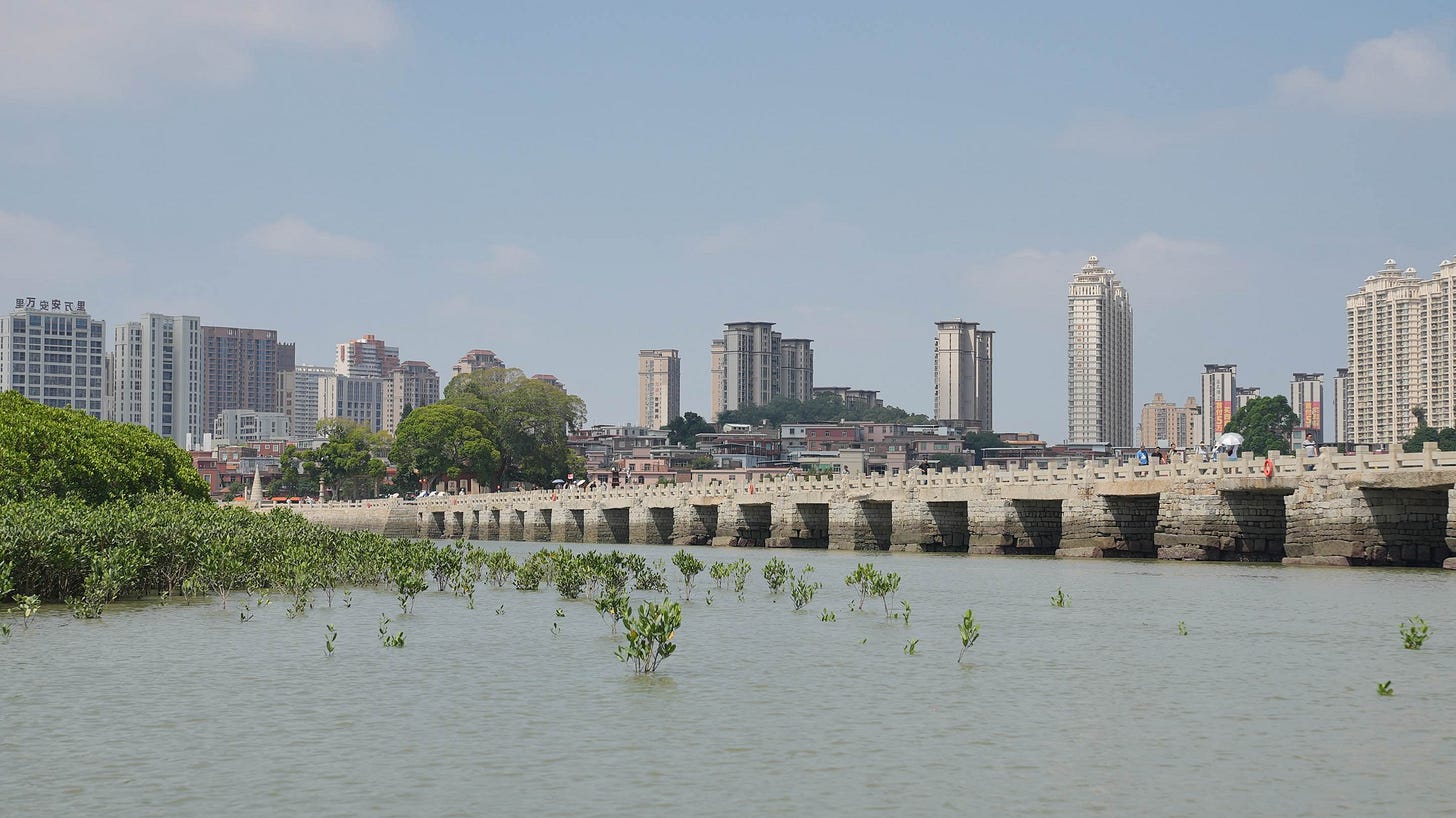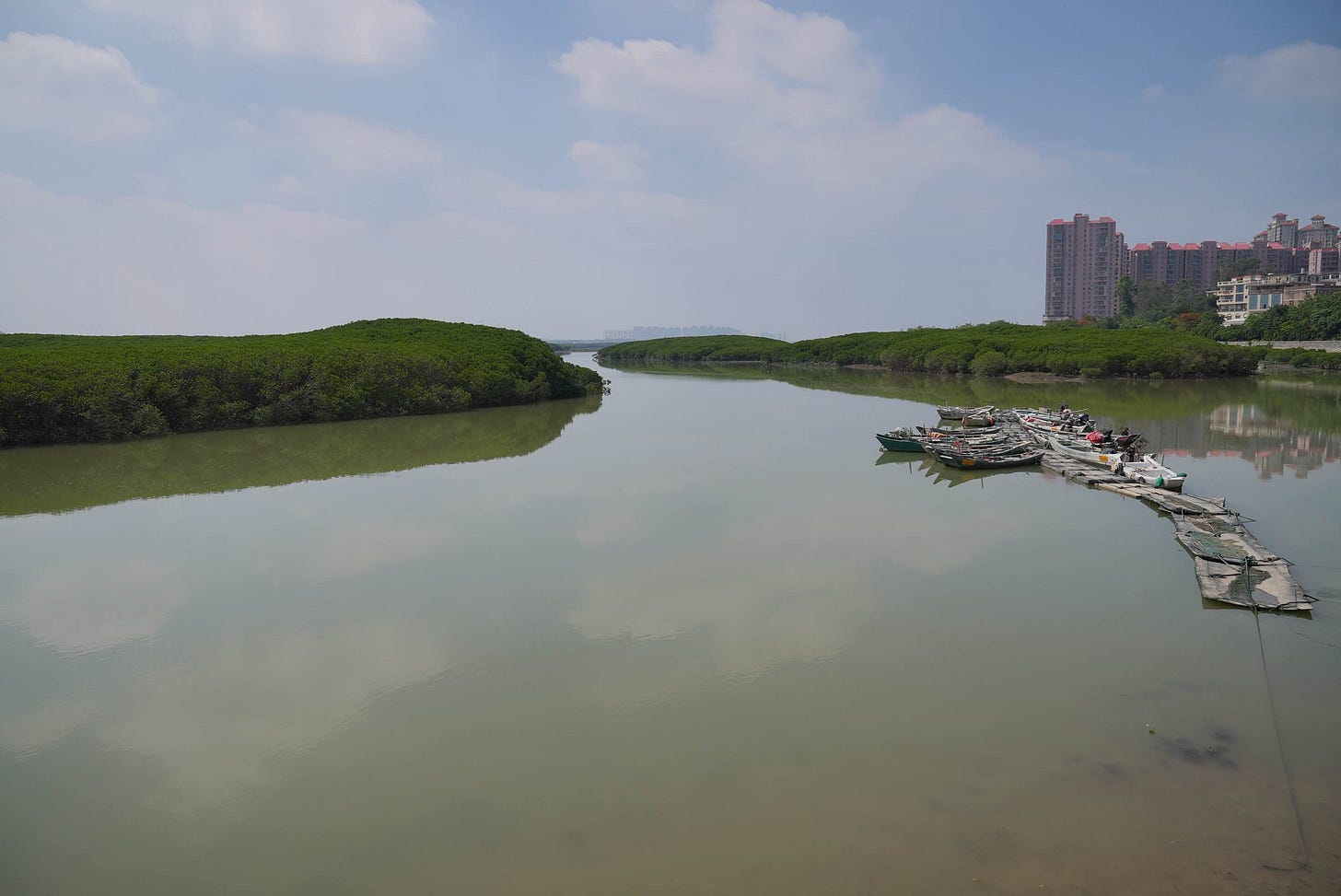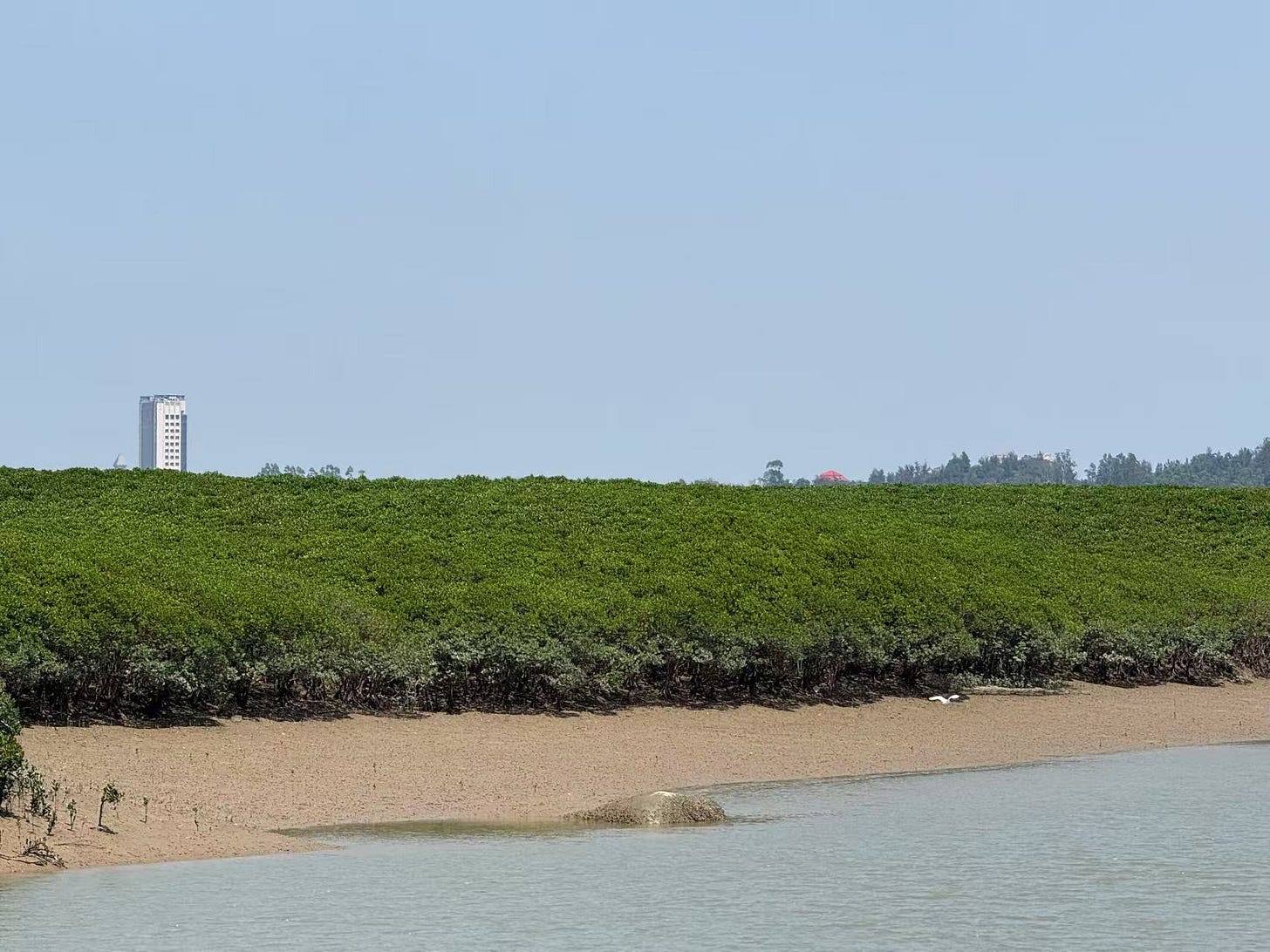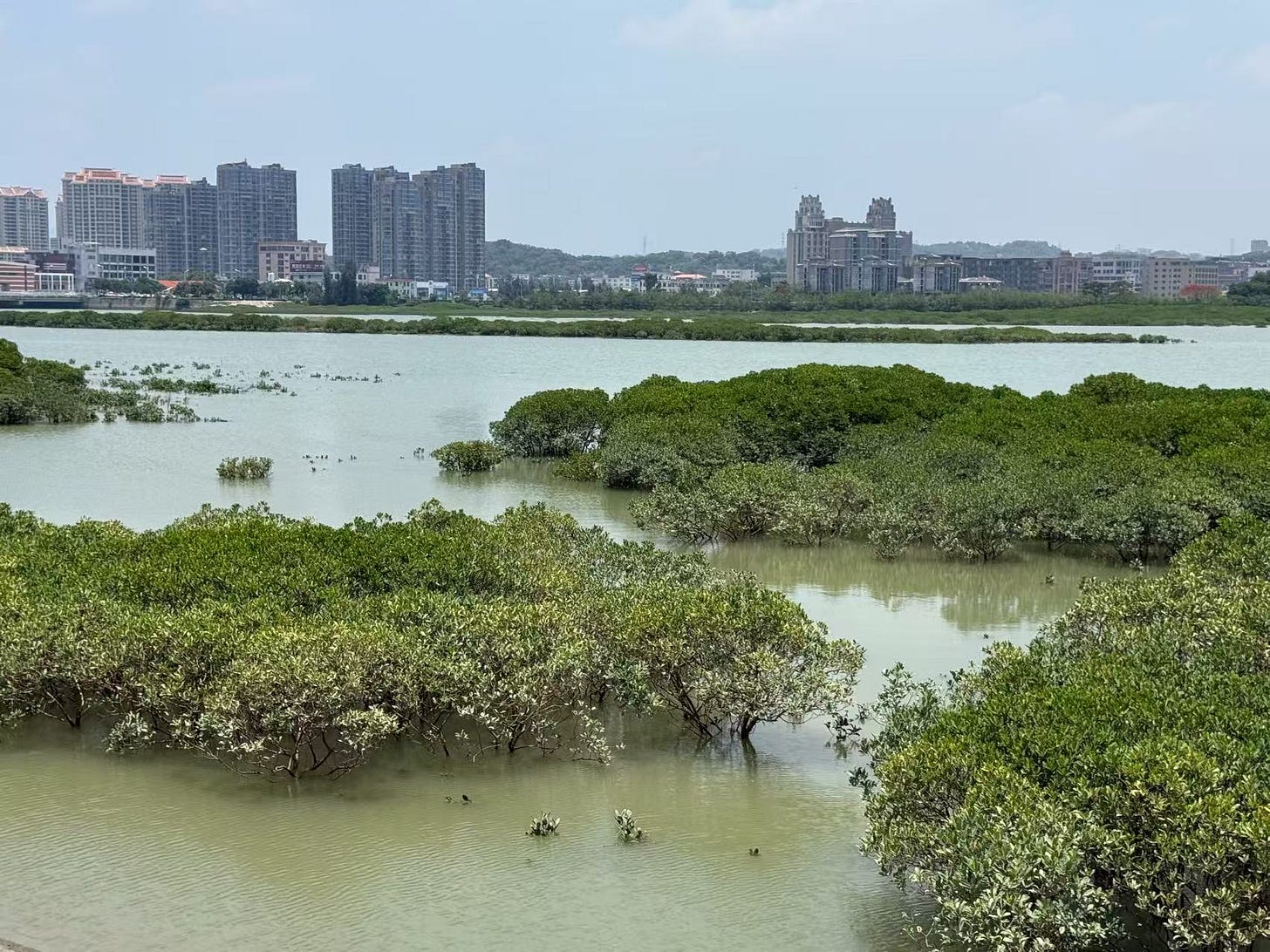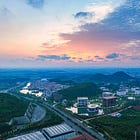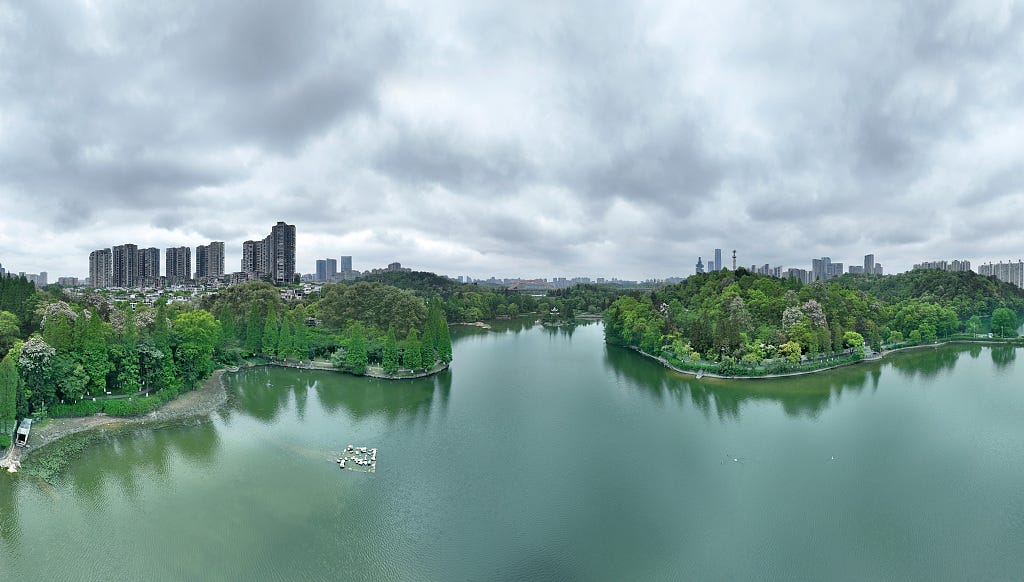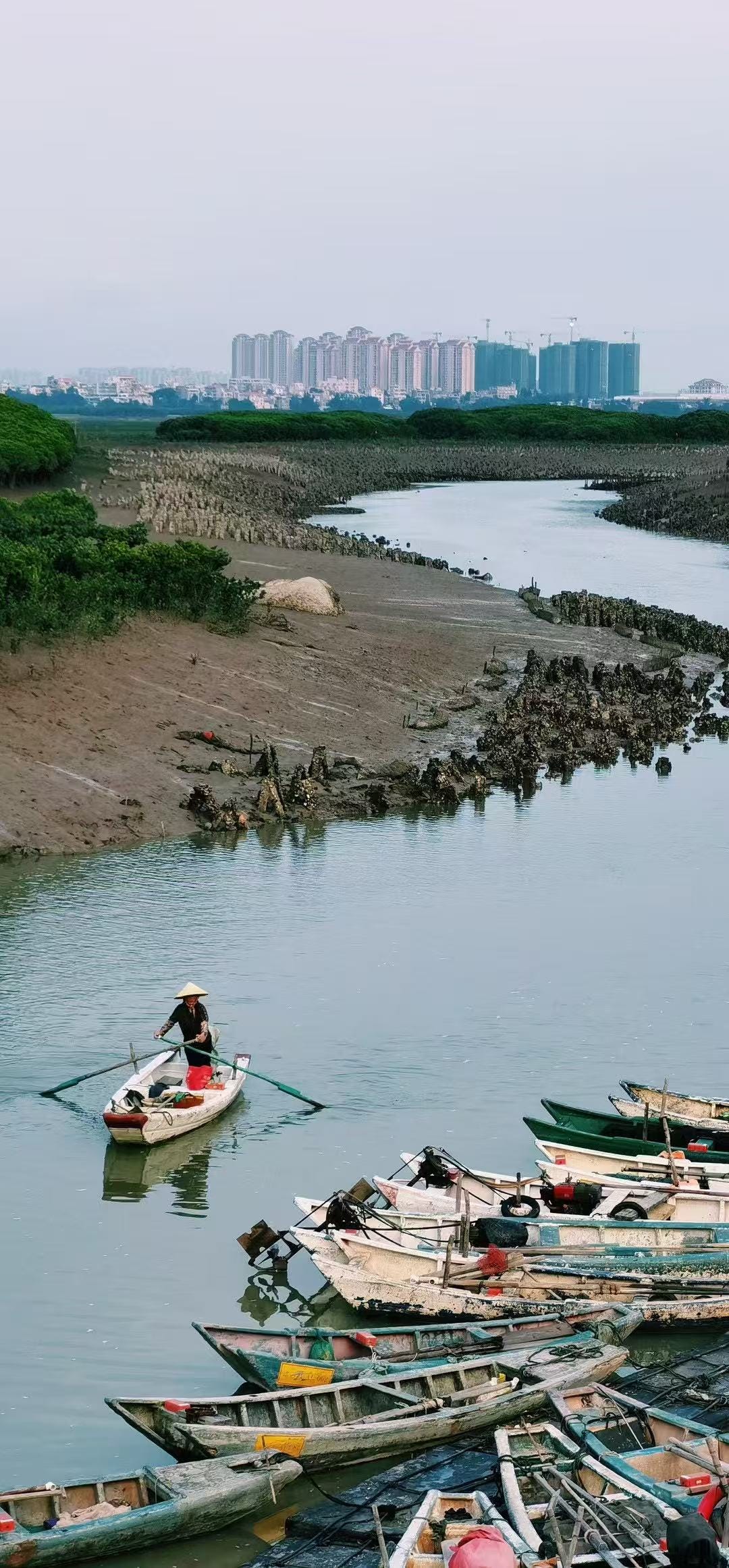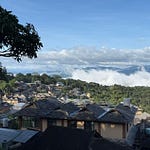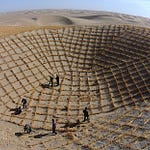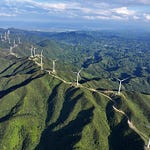In case you didn’t notice, this newsletter’s name is inspired by “lucid waters and lush mountains are invaluable assets”, the slogan of the “Two Mountains“. This episode includes my trips to Guizhou, Fujian and Xizang/Tibet and also explains why I’ve been off this platform recently.
In China, the "Two Mountains" concept says that lucid waters and lush mountains are as valuable as gold and silver. In other words — a healthy environment is the real foundation for prosperity.
I wanted to see what that looks like in everyday life.
So on my trips across China this year, I’ve always carved out an hour — or sometimes a whole day — to meet the people working with nature, and to see how this idea has taken root.
What does it really take to turn green mountains and clear waters into gold and silver?
And what can it teach us about climate resilience… and building better cities?
What if the secret to protecting our cities from floods, keeping wildlife alive, and helping local communities thrive… was sitting quietly in the wetlands right outside our door?
Where land meets sea in southeastern China lies Quanzhou Bay — a place steeped in history… and alive with biodiversity.
They call it the Ancient Port of a Thousand Years. Over 1,200 years ago, ships loaded with tea, porcelain, and silk set sail from here, bound for ports across the world. Today, UNESCO recognizes Quanzhou as a World Heritage Site — an Emporium of the World.
One of its landmarks is the Luoyang Bridge, stretching across the wide estuary of the Luoyang River.
When I arrived, it wasn’t just the bridge that caught my eye… but the long, green stretches of mangroves lining both banks.
At the Quanzhou Bay Wetland Reserve Center, I met Chen Ruohai — a senior researcher. He unrolled a map across the table and began tracing the waterways with his finger.
“As you can see from this map, Quanzhou is home to two major rivers — the Luoyang and the Jinjiang — whose estuaries flow into Quanzhou Bay. The area where these rivers meet the sea is especially rich in biodiversity. That’s why the estuary was designated for protection. It’s home to mangroves, a wide variety of bird species, and rare animals like the Chinese white dolphin and Chinese sturgeon.”
Chen told me the reserve has three core zones — places where people aren’t allowed to step foot. One protects the Chinese white dolphin and sturgeon. Another shelters migratory and resident birds. And this one that I’m visiting safeguards the mangroves by the Luoyang Bridge.
“This area contains native mangroves as well as restored patches. We’ve planted large stretches of local species — the biggest restoration and covers more than 7,000 mu, up from just 257 mu before. The native patch is right over there, behind Yuguang Middle School.”
But twenty years ago, this scene didn’t exist. The shoreline was bare, the mangroves almost entirely gone — pushed out by fishing and other human activity that left the river water murky.
That started to change in 2003, when the wetland reserve was created. Since then, cleaner water and large-scale replanting have brought the forest back to life. Today, 460 hectares of mangroves stretch across the estuary.
The only way to get close to them is by boat, when the tide comes in. On the dock, I met Liu Xinmin — a fisherman who’s been working these waters for more than fifty years.
“I’ve been fishing in the Luoyang River since I was 15. The sea was my livelihood. But when pollution hit, I couldn’t sell my catch anymore — it was worthless.”
We pushed off in Liu’s boat, joined by Ni Jinfeng, deputy director of the local natural resources department. He’s in charge of restoring and managing the mangroves.
Ni told me the reserve depends on fishermen like Liu — their knowledge of the tides, the mudflats, the channels. The reserve also hires their boats to help patrol the mangrove zones and plant them.
“The mangroves here are mostly Kandelia obovata (秋茄) and Aegiceras corniculatum (桐花树), with some Avicennia marina (白骨壤).”
As we neared the forest, the mangroves looked less like towering trees and more like dense bushes, their roots stretching into the mud like giant claws.
Liu smiled as he looked out at the green expanse:
“Things are better now. The smell is gone, the harvests are bigger — more fish, shrimp, oysters — and the villagers are earning more.”
Ni leaned over and added that I should come back in October or November.
“Quanzhou Bay is a stopover for migratory birds. Come then, and the mangroves are covered in white egrets. When they all take off at once, it’s breathtaking.”
Even now, I spotted a lone white bird — probably an egret — lifting off against the deep green of the mangroves.
Professor Li Yuhong of Huaqiao University, one of the first scientists to study the mangroves at the Luoyang River estuary, told me they’ve seen clear changes in recent decades: the trees are slowly creeping further north, little by little.
“The two species, Aegiceras corniculatum (桐花树) and Avicennia marina (白骨壤), naturally grow no further north than this site in China — and on this side of the Pacific. As global temperatures rise, they’re slowly creeping further north. Mangroves need a specific balance of water, warmth, and salinity. This area isn’t just a wildlife haven; it’s an important reference for scientists studying biodiversity and tracking how species shift their range as the climate warms.”
Later, standing on the Luoyang Bridge, I looked out over the water and the communities nearby. I wondered: for a port city, the bay is prime real estate for shipping. So how to make sure the reserves well protected while Quanzhou still maintain its edge on trade?
And that, Professor Li told me they’ve been working to involve communities in conservation works, like how Ni’s department work with local fishermen on mangroves management.
“People have lived here for over a thousand years — this is the site of an ancient port. That makes conservation challenging. Many reserves are far from towns, but here, several communities sit right on the estuary. Managing the area means working closely with residents, helping them understand why protection matters, and encouraging their participation.”
Communities have lived side by side with wetlands for centuries in Quanzhou. It’s a relationship of both affection and friction.
Locals like Liu Xinmin enjoy the cleaner water and richer marine life. But some grumble about one unexpected side effect — more mosquitoes.
I can relate. I don’t live near mangroves, but I’ve spent plenty of time in inland wetlands. Whether it’s a boat ride across a lake or a walk along a riverbank, I’ve met my share of wildlife — mosquitoes included. Usually, I just laugh it off. It’s a price I’m willing to pay for a healthier environment and greater biodiversity.
But is it a price worth paying?
Wetlands are nature’s filtration systems. They quietly clean our water, buffer floods, and protect shorelines from storms.
It sounds simple enough now — but it took some painful lessons for society to fully understand their value.
For China, one of those lessons came in the summer of 1998.
According to the United Nations, from July to August that year, 60 days of flooding across China affected 223 million people — one-fifth of China’s population. Health clinics, schools, water supplies, and critical infrastructure — roads, bridges, irrigation systems — were destroyed. By the end of August, direct economic damage exceeded 20 billion U.S. dollars.
The causes were complex — heavy rainfall, climate change — but officials and experts like Yuan Xingzhong from Chongqing University also pointed to another factor: the loss of wetlands:
“Take Dongting Lake and Poyang Lake along the Yangtze River, for example. They play a major role in flood management — reducing flood peaks, controlling floods, and slowing the flow. But many of our lakes were reclaimed and enclosed. Large lakes became smaller. That’s why we were hit by record floods along the Yangtze in 1998 — we lacked the space to slow down and hold back floodwaters. The disappearance of these spaces means that flood disasters became more intense.”
That disaster forced China to rethink its relationship with water.
Since the early 2000s, the country has poured resources into wetland restoration — places like the Quanzhou estuary I visited. Today, China has more than 2,200 wetland nature reserves.
And the effort isn’t limited to nature reserves. In cities, wetlands provide multiple benefits. During storms, they absorb excess rainwater, reducing urban flooding. Their abundant vegetation filters domestic and industrial waste, improving water quality.
China is now using wetlands to design more sustainable, resilient, and beautiful cities. More than 900 national wetland parks have been built — 90 percent open to the public for free. And China now has the largest number of “wetland cities” accredited by the Ramsar Convention.
Professor Yuan has been part of this redesign of how people and water can coexist. For more than two decades, he’s restored mangroves along China’s southern coast, designed wetland parks for cities and villages, and revived wetlands along the Yangtze River.
Now, he’s turning his attention to small and micro wetlands. They’re often overlooked — duck ponds in a neighborhood, or a man-made creek in a backyard. But Yuan says they’re vital for cities adaptation to extreme weather.
“Today, we face serious challenges like global climate change, whose most visible effects are the frequent extremes of prolonged drought or intense rain and flooding. In such times, sponge city projects centered on micro and small wetlands become crucial. We need to consider how to respond to climate change by strengthening the resilient design of these wetlands.”
He envisions integrating small wetlands directly into urban planning because something as small as a pond can be easily filled up.
“We need to emphasize multifunctional integration — combining flood regulation, purification of surface runoff, biodiversity conservation, carbon sequestration, and even landscape enhancement. By coupling all these functions together, we can comprehensively improve the ecosystem services they provide. The key is not to see them as isolated points, but as part of the city’s overall ecological network.”
And Yuan believes we’re only beginning to tap their potential.
“We’ve restored so many wetlands and protected the existing ones. Now the question is: how can we ensure they bring us ecological benefits, so more people can enjoy what wetlands have to offer? This is what we mean by the transformation of wetland ecological values — finding ways to enable more and higher-quality wetlands to produce more and better ecological products. At this stage, this may be one of the most important tasks for wetland conservation and the sustainable use of wetland resources.”
So what are these “ecological products”?
They’re all around us — and they can be as simple as the oysters Liu Xinmin raises in the Luoyang River…
…or the mental and physical well-being locals enjoy from time spent in wetland parks.
In the Lalu Wetland Park in the city of Lhasa (which is also accredited as one of the Wetland Cities this year) in Xizang/Tibet, a retiree told me he often walks the entire loop around the lake.
“The air is really good, and so is the environment. The scenery is at its best in July and August. It usually takes about four hours to walk a full circle around this lake. Sometimes I come on my own, sometimes with my family.”
When I visited the city of Guiyang back in June for another Climate Watch episode, I went to the Guanshan Lake Park.
The park covering over 300 hectares with two big lakes is an online sensation for marathoners in the city. Director Cao Yang of the local environment authority told me this park is one of their ecological products.
“In our fast-paced urban lives, especially during breaks or after meals, we all need a place to relax and unwind. Parks, greenways, and even small neighborhood parks provide these ecological products by offering residents the experience of “opening the window to see green” and stepping outside into nature.”
Cao also said because of the good environment of the Guanshanhu District that he’s working in, businesses and people have been flocking in over the past 20 years. Its population swelled to more than 700 thousand, making it practically the new city center of Guiyang.
This he believed is the societal and economic benefits of healthy environment bring to cities.
My trip to Quanzhou was actually planned for another story — coming soon — on how oysters can help meet our sustainability goals.



